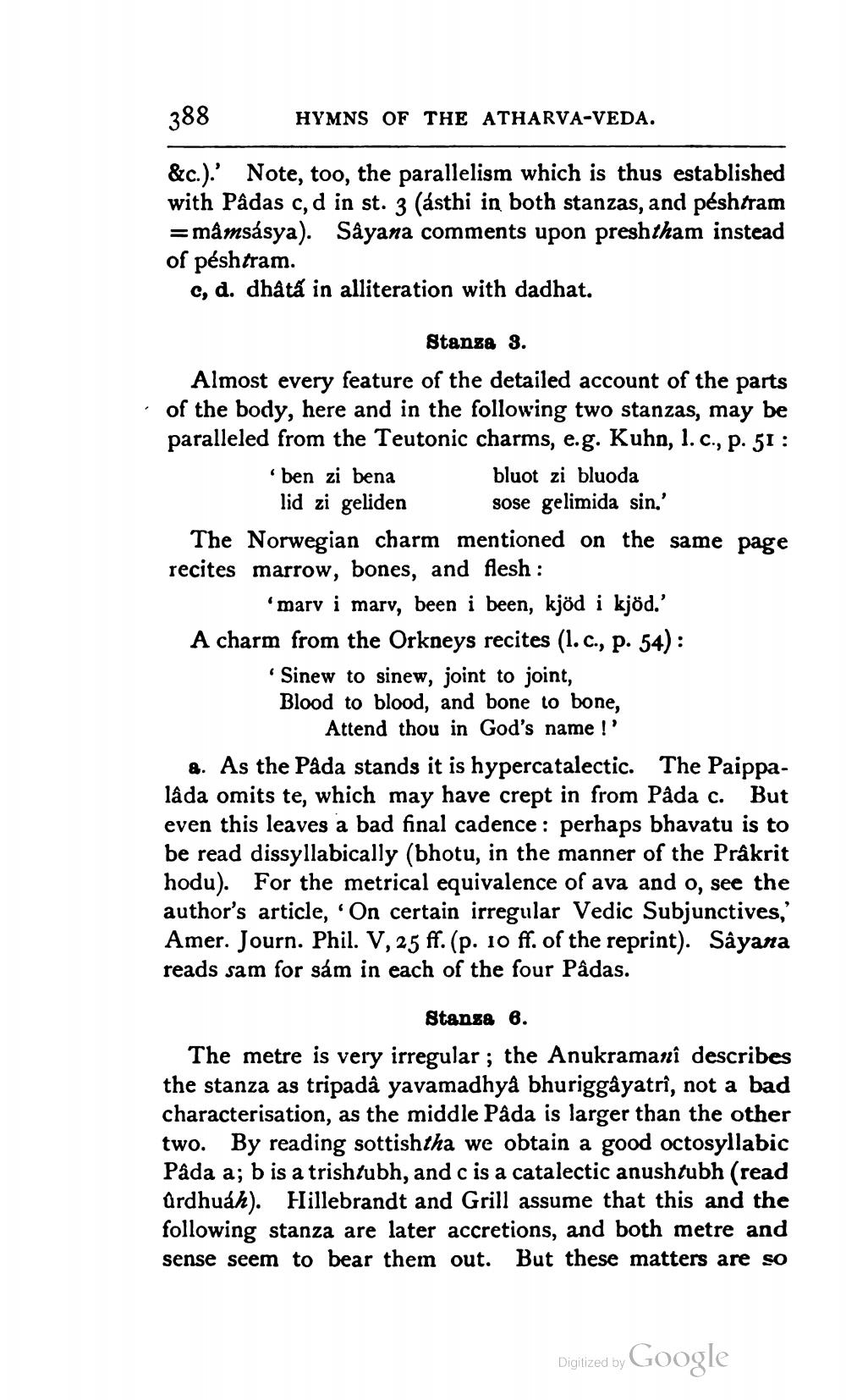________________
388
&c.). Note, too, the parallelism which is thus established with Pâdas c, d in st. 3 (ásthi in both stanzas, and péshtram = mâmsásya). Sâyana comments upon preshtham instead of péshtram.
c, d. dhâtă in alliteration with dadhat.
HYMNS OF THE ATHARVA-VEDA.
Stanza 3.
Almost every feature of the detailed account of the parts of the body, here and in the following two stanzas, may be paralleled from the Teutonic charms, e.g. Kuhn, 1. c., p. 51:
'ben zi bena lid zi geliden
bluot zi bluoda sose gelimida sin.'
The Norwegian charm mentioned on the same page recites marrow, bones, and flesh :
'marv i marv, been i been, kjöd i kjöd.'
A charm from the Orkneys recites (1. c., p. 54):
'Sinew to sinew, joint to joint,
Blood to blood, and bone to bone, Attend thou in God's name!'
a. As the Pâda stands it is hypercatalectic. The Paippalâda omits te, which may have crept in from Pâda c. But even this leaves a bad final cadence: perhaps bhavatu is to be read dissyllabically (bhotu, in the manner of the Prâkrit hodu). For the metrical equivalence of ava and o, see the author's article, 'On certain irregular Vedic Subjunctives,' Amer. Journ. Phil. V, 25 ff. (p. 10 ff. of the reprint). Sâyana reads sam for sám in each of the four Pâdas.
Stanza 6.
The metre is very irregular; the Anukramanî describes the stanza as tripadâ yavamadhyâ bhuriggâyatrî, not a bad characterisation, as the middle Pâda is larger than the other two. By reading sottishtha we obtain a good octosyllabic Pâda a; b is a trishtubh, and c is a catalectic anushtubh (read ûrdhuák). Hillebrandt and Grill assume that this and the following stanza are later accretions, and both metre and sense seem to bear them out. But these matters are so
Digitized by
Google




